I need some advice on how to repair a dry rock wall that has been in place for over 50 years that the previous owners of my home installed to stabilize the slope that takes up half of my back yard.
Many of you may know that California has been going through a severe drought. We did not get our usual precipitation in November, December or January. So that means the slope was very dry. In February, we got ... officially ... 10 inches of rain out of two storms, soaking everything, including the slope very, very well because it was not a hard rain with lots of run off.
Yesterday, when I went up the stairs to go to the top of the slope, I noticed that many of the rocks at the base had fallen off of the slope and I think I need to rebuild the wall. I can't afford to hire someone, so I am going to have to do it. I haven't got a clue as to how to make it strong and stable. I don't think I should ignore it and hope everything will stay put even though I think the junipers play a big role in stabilizing the slope.
In the photos below you will see a fence in front of the slope. There is about two feet of soil at the base of the fence and then the rock wall is almost vertical for another two feet. Then the rocking follows the slope.
These photos were taken in January and I can't take photos of the damage because it is raining again. We are supposed to have rain almost every day for the next ten days.
Sorry, if I am adding too many photos.
This is the area where I first noticed the rocks had fallen away from the slope ... note the rocks behind the woodshed are also falling.
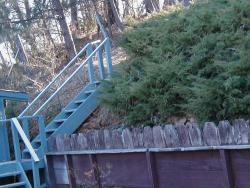
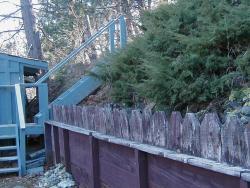
I've noticed "rock slides" in several places behind the fence. These are photos that show more of the slope.
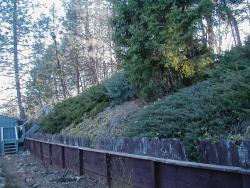
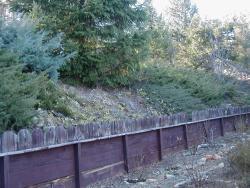
These photos show how the slope was rocked further up above the wall.
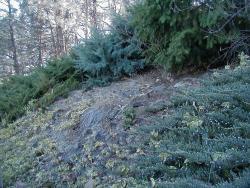
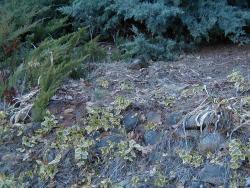
To add more rocks to the wall would be an awesome task as they would have to be hauled up from the street level which is down another flight of stairs.
Any advice would be greatly appreciated.
Smiles,
Lyn





